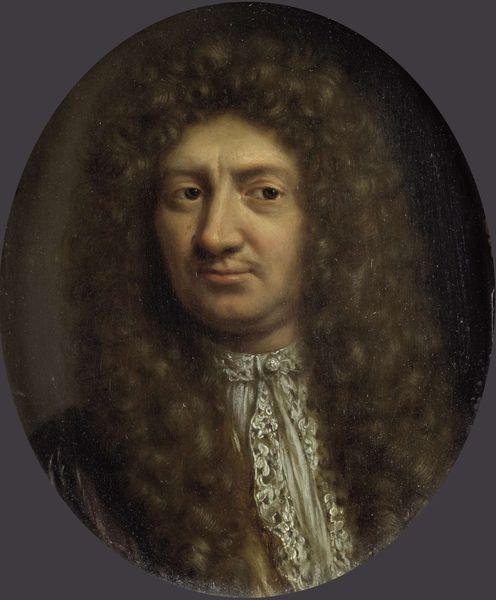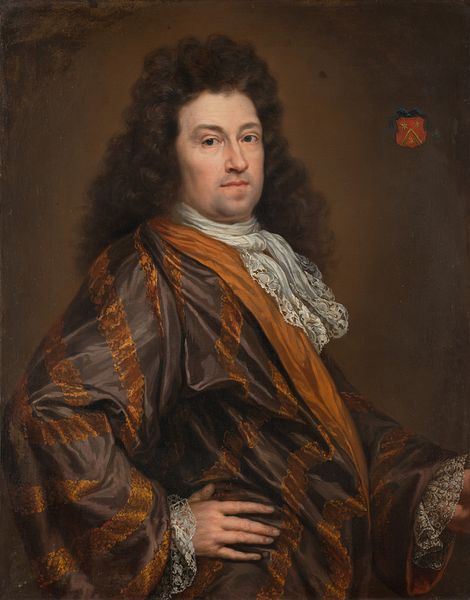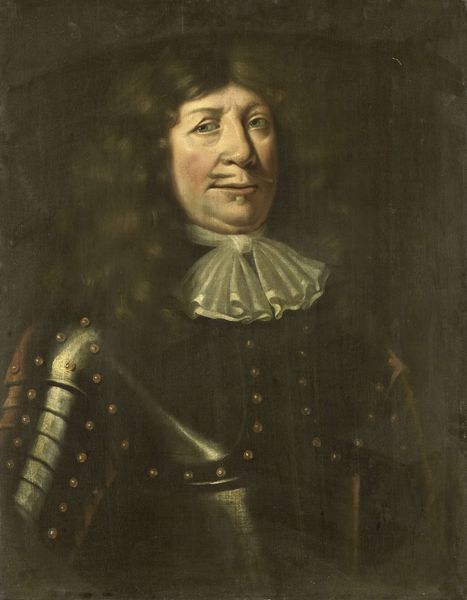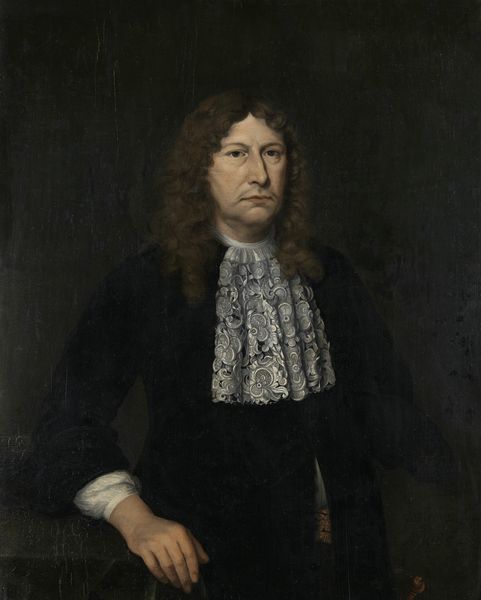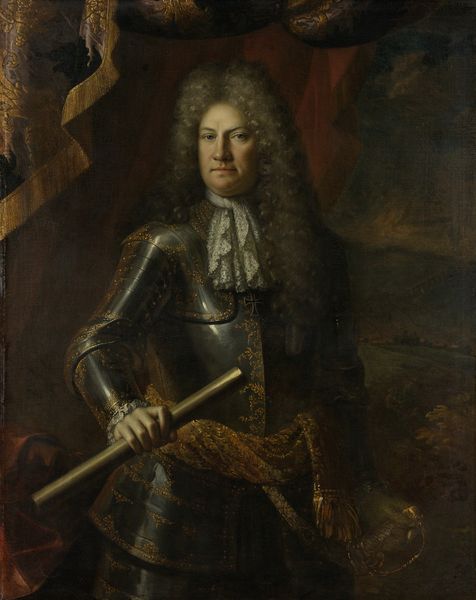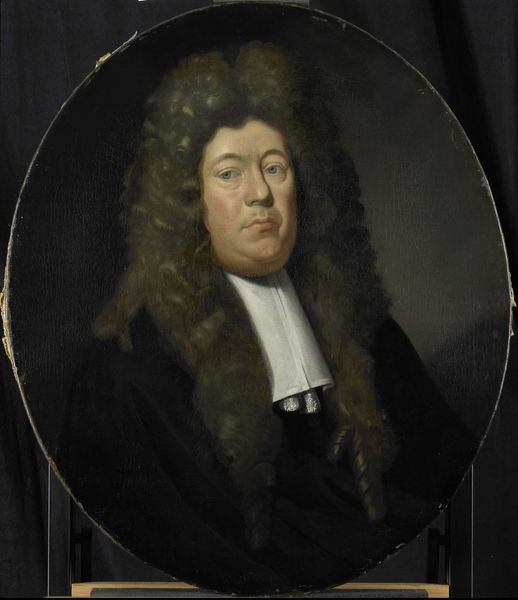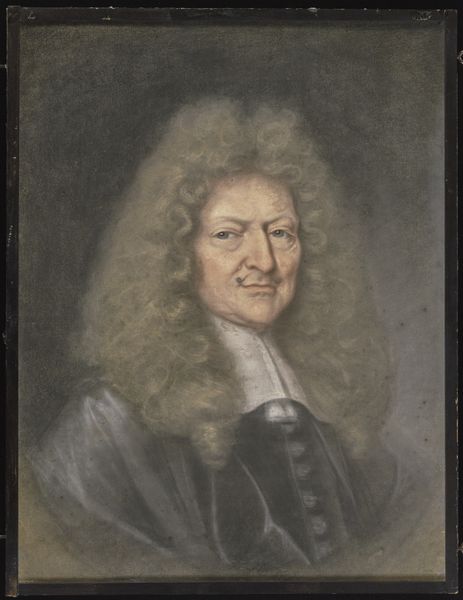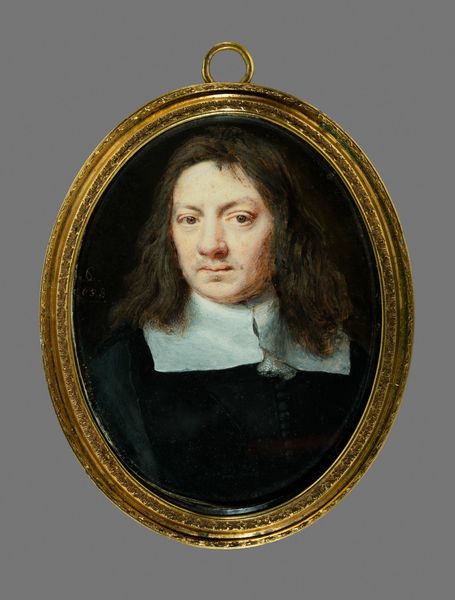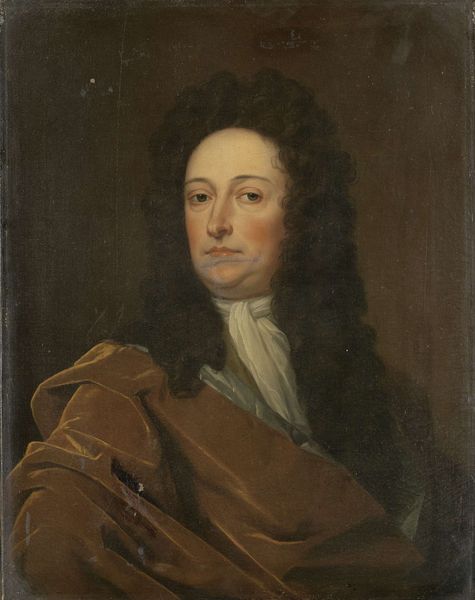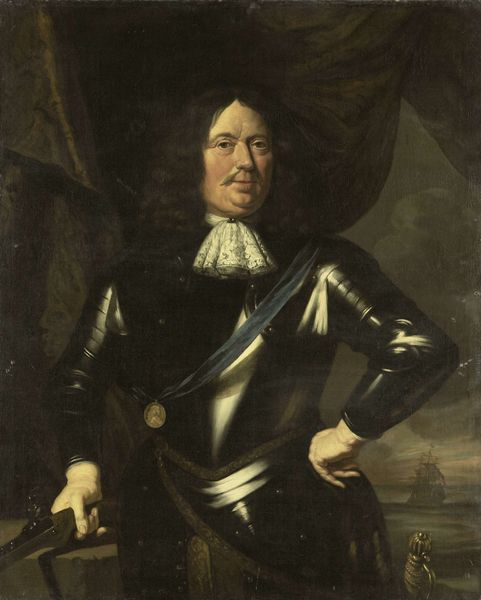
Portrait of Cornelis Tromp (1629-91), vice-admiral of Holland and West Friesland 1640 - 1690
0:00
0:00
painting, oil-paint
#
portrait
#
baroque
#
painting
#
oil-paint
#
history-painting
#
realism
Dimensions: height 80 cm, width 64 cm, depth 13.5 cm
Copyright: Rijks Museum: Open Domain
Editor: This oil painting, "Portrait of Cornelis Tromp," made sometime between 1640 and 1690 by David van der Plas, immediately strikes me because of the sharp contrast between the intricate lace collar and the cold steel of his armor. It seems like a painting about status and wealth. How do you see it? Curator: The portrait, rendered in oil paint, points to a very specific production of identity intertwined with social status. Look at the way the metallic gleam of the armor is depicted, its crafted quality is on display, almost flaunted. Editor: Right! It is hard to not look at how much detail has gone into it. The way he is using armor suggests wealth and the tools of war-making here. It goes way beyond needing it just for protection. Curator: Exactly. Consider the labour and resources needed to procure, produce and then maintain that suit. It is not just protection; it's a display, isn't it? Moreover, the canvas itself - think about who had access to that substrate in the 17th century. This becomes less about the sitter as a personality and more about the networks that made him and the portrait possible. How would this portrait function if it had been created on paper or as a fresco? Editor: Good point. That lace collar looks very expensive to make and hard to care for too. Using oil paint means this would last a long time. Curator: These weren't accidents. The chosen materials broadcast wealth and endurance; it's about embedding Tromp in a lineage of power and visibility. Editor: So, by focusing on the materials, we move from just seeing a person to understanding the complex economic and social systems at play. It's a different way of understanding art history. Curator: Precisely. We consider not just what is depicted, but how it was materially realized and circulated within its social environment. What do the means of its making say about its function? Editor: I will definitely look at materials with new eyes from now on! Curator: It enriches the experience, doesn't it? The surface reveals so much more.
Comments
No comments
Be the first to comment and join the conversation on the ultimate creative platform.
